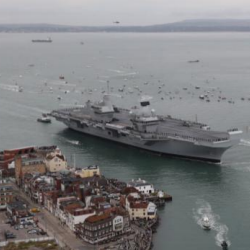

Philip Reginald Malet de Carteret

Portsmouth
Port Detail
Decorations 1914-1915 Star; Victory & British War medals Wounded Died 31 May 1916 Next of kin address Jersey St Ouen's Manor United Kingdom Mother Amy Father Reginald More info The following information is provided courtesy of Ned Malet de Carteret. Midshipman Philip Reginald Malet de Carteret, RN (1898-1916) My great-uncle was born in Sydney on January 23rd 1898. Son of Jurat Reginald Malet de Carteret of St Ouen’s Manor(1865-1935) and Amy Anne Armstrong (born in Australia (1865-1950, his second cousin). Philip was the eldest son and he left Australia in 1907 and went to school in Lausanne before entering Eltham College and subsequently RNC Osborne. He then attended RNC Dartmouth in 1913 and had not passed out from the college when war was declared on August 4th, 1914. His war experiences are recounted in his 54 letters written home to his family in Jersey. Philip joined HMS Canopus, a tired pre-dreadnought battleship manned by old reservists and young inexperience snotties. The ship was too slow to join up with Admiral Sir Christopher Craddock’s Squadron at the Battle of Coronel (November 1st, 1914) and was grounded in Port Stanley Harbour in the Falkland Islands. HMS Canopus fired the first shots of the Battle of The Falkland Islands at Admiral Graf Spee’s German Squadron on December 8th, 1914, hitting the Gneisenau, and she then had to watch the British battle cruisers HMS Invincible and Inflexible pursue the Germans to their demise. In March 1915 HMS Canopus arrived in Malta and Philip spent the whole of the Gallipoli Campaign assisting the Allied forces. He writes of bombarding the Dardanelles Straits before the Allied landings. He was slightly wounded in the ear by a spent cartridge shell whilst taking the wounded soldiers off one of the beaches in his lighter. He writes of spending the day on C beach at Suvla Bay in October. Philip spent the best part of 9 months patrolling in the Gulf of Smyrna off the Salonika Coast. He finally returned to Britain in April 1916 and swapped ships onto the battlecruiser HMS Queen Mary. Philip returned to Jersey for his only leave of the war for 10 days in May. He met his death at Jutland on 31st May, 1916 in the battle cruiser action at the beginning of the engagement, where two of the three battle cruisers were sunk in quick succession - HMS Indefatigable and HMS Queen Mary. Over half of the British losses at Jutland came from the sinking of the three battle cruisers. Philip went down with his ship along with over 1,250 officers and crew and he has no grave. He is commemorated on the Royal Naval Memorial at Portsmouth along with a plaque in St Ouen's Church and on the War Memorial. A stained glass window, given by his sister Ellie, can be seen in Grouville Church, Jersey.Papers in National Archives - ADM196/120. Commemorated in St Ouen Church.

